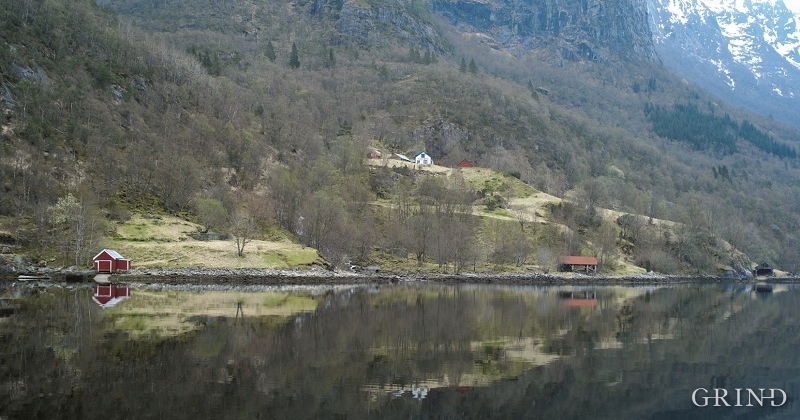Published: 21.02.2013 | Author: Svein Indrelid, Ågot Gammersvik, Øystein Jansen
Kårstad, Veafjorden, an authentic grazing landscape. (Svein Nord).
Stamnes is situated between two headlands, old landing places for people who came from the north and west. Earlier on there were several burial mounds here, two of them were where the church is now situated- stone from the mounds is still to be found in the stone wall around the church. On these burial mounds there were large oaks, Håreikjæ and Kolleikjæ. They were thought to be old sacrificial places, and the first stave church at Stamnes was erected here. Later on a new church was built here in 1861.
The cultural landscape has changed; the settlement has developed at the fjord, the sandpits have cut into the hills. Around farms without roads at Veafjorden there is also well-kept cultural landscape, as at Kårstad, Vedå and Bukkastein.
At several places near Stamnes, on the south side of the sound, one can still see scars in the terrain from the removal of gneiss for use in cobblestone production. Large quantities were delivered to Bergen in the period 1871-1914. Good examples of its use in the streets of Bergen are seen at The Church of the Cross and the Market by the Leprosy Museum. At Stamnes it was the nearness to the fjord and the access to boat transport that made the cobblestone industry possible. Stone production ceased when more moderately priced stone from Østfold came on the market.




